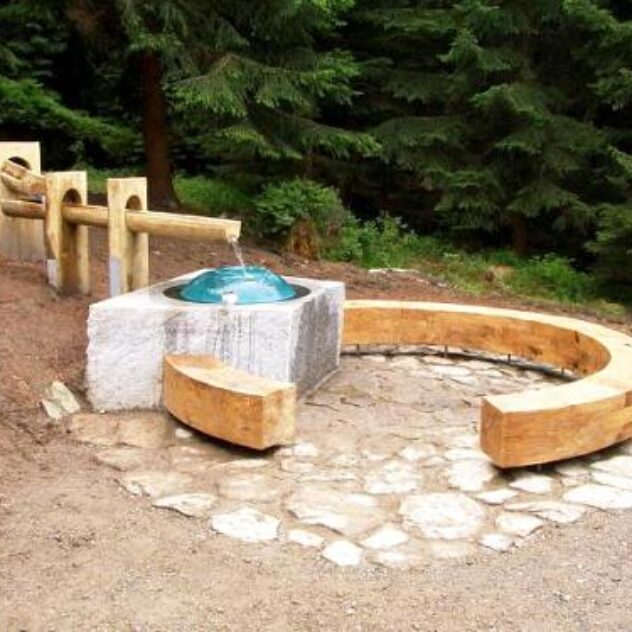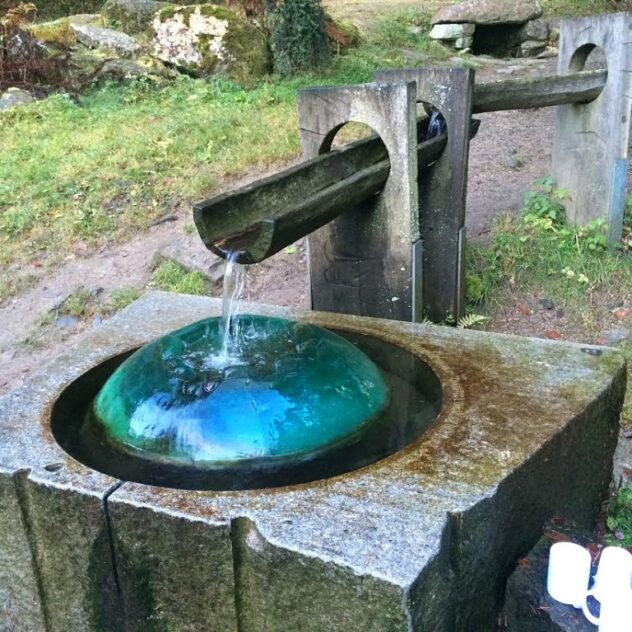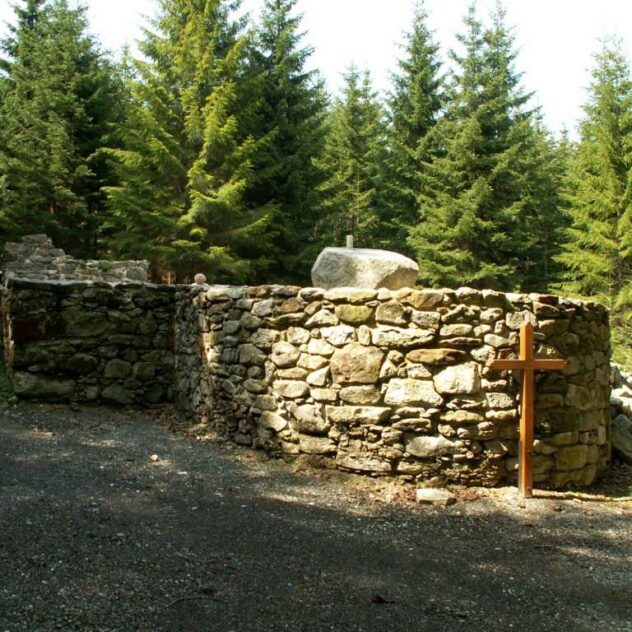Hauswald chapel near Srní
Information about the pilgrimage site
This pilgrimage site is one of many mountain pilgrimage sites that were widely visited in the past and where regular pilgrimages were held, but which were liquidated during the socialist era. In the area of the former Sudetenland, where this chapel was located, the destruction was intensified by the forced displacement of the indigenous population.
There is a legend about two women who were frightened by a bear in this place. They both started praying to the Virgin Mary and were miraculously saved. The bear began to writhe in pain and left the place without harming them. The women hung a picture of the Virgin Mary on a tree to commemorate their rescue. From then on, miracles began to happen at the “picture tree”. The miraculous power of the place spread throughout the region and visitors increased.
In 1820 the village of Srní decided that such a place deserved a shrine and so a small chapel was built, dedicated to Our Lady of Lourdes. You can still read about it today in the story The Red Heart by the Sumava writer Karel Klostermann. On the day of the Feast of the Assumption of the Virgin Mary, when the Deer Pilgrimage was held, crowds of pilgrims gathered at the chapel, called the Lourdes of Sumava. Soon its capacity was no longer sufficient, and a new, larger chapel was built in 1860. The construction was poor and threatened to collapse, so it was closed. Nevertheless, pilgrims continued to go there, especially to the nearby spring, which was attributed with healing effects.
The pious inhabitants of Šumava organized collections for the construction of a new chapel, and so in 1901 the construction of a new chapel began. The land was donated by Josef Gruber from Srní, the building timber by Prince Schwarzenberg, other materials by the citizens of Srní, and the masonry work was done by Martin Marek, a mason from Prashil. On 8 August 1902 the chapel was consecrated by the vicar of Raštejn. Between the World Wars, processions came to the chapel from as far away as Tyrol. After the Second World War, the German population was displaced and the entire border strip was closed as part of the Iron Curtain. Nevertheless, some people dared to go to the chapel, so the communist comrades decided to destroy the chapel. On September 14, 1957, the soldiers mined and blasted the chapel. Only the ruins of the chapel remained, the churchman saved only the wooden statue of Our Lady of Lourdes, which is today placed in the church in Srní.
Places in the border zone fell into oblivion for many years. It was not until 2006 that the Klostermann Civic Association, in cooperation with the Šumava National Park Authority, took care of the resurrection of this site. The site was restored and commemoratively landscaped. The spring of the well was also restored, which is led through a wooden trough over stones symbolizing the rosary to a glass well. Its glass hands offer the pilgrim refreshing water.
The Hauswald Chapel is one of the most visited places in Šumava, both by tourists, pilgrims and people looking for healing. It has a newly adapted access so that people with physical disabilities can also reach it. It is said to be located in a very strong energetic place.
Tourist attractions in the vicinity
Srní Visitor Centre – Wolf Run. It is one of the visitor centres of the Šumava National Park. In the building of the centre, visitors can have refreshments and see an exposition dedicated to wolves. They are then located in a free range about two kilometres from the centre building. For more information visit https://www.npsumava.cz/navstivte-sumavu/navstevnicka-centra/nc-srni/ .
Kašperské Hory is a beautiful medieval town with a rich history connected with gold mining. It offers a historical centre, several churches, expositions to gold mining. About 6 km from the town is the guard castle Kašperk with its own rich history. For more information visit https://www.kasphory.cz/turista/poznej-kasperky/zajimavosti-a-pamatky .
Sušice, a town called the gateway to Sumava, is the starting point of many tourist trips to Sumava and also an important stop for paddlers going down the Otava River. Above the town rises the pilgrimage site of Andělicek, from which there is a magnificent view of Sušice and its surroundings. For more information visit https://www.susicko.cz/turisticke-cile .
Rabi Castle is a ruin today, but we can still imagine its grandeur in its glory days. According to legend, the Hussite leader Jan Žižka lost his second eye during the conquest of this castle. More information at https://www.hrad-rabi.cz/cs .
Modrava is a Šumava village that serves as a starting point for many hiking trails and circuits, especially in the area of the Slates. The most famous are the Three Lakes Slat, the Gypsy Slat and the Chalupská Slat. More information at https://www.mikroregionsumava.cz/mszapad/default.asp?lng=cz .
Other tourist attractions in the area can be found on the website:
Accommodation
- Mountain chalet Šumava in Srní provides affordable accommodation https://horskachatasumava.cz/ubytovani/
- This area is very touristic and offers a large number of accommodation at commercial prices.
Availability
By car
The village of Srní, where the Hauswald Chapel is located, is accessible by car. The chapel can be approached from the Srní – Mechov car park and then continue 1.6 km along an easy path under the Vchynicko-Tetovsky navigation channel.
By public transport
The public transport infrastructure is excellent. There are excellent bus connections to Srní, especially during the summer season. Transportation by train is more complicated, the nearest station is in Sušice, from which you have to continue by bus.
On foot
In the surroundings of Srní there is a network of hiking trails marked by the Czech Tourist Club. The area is also part of the Šumava National Park, which has a network of information centres.
On a bicycle
There is a network of cycling routes in the surroundings of Srní, which are very well maintained and marked. The area is also part of the Šumava National Park, which has a network of information centres.








